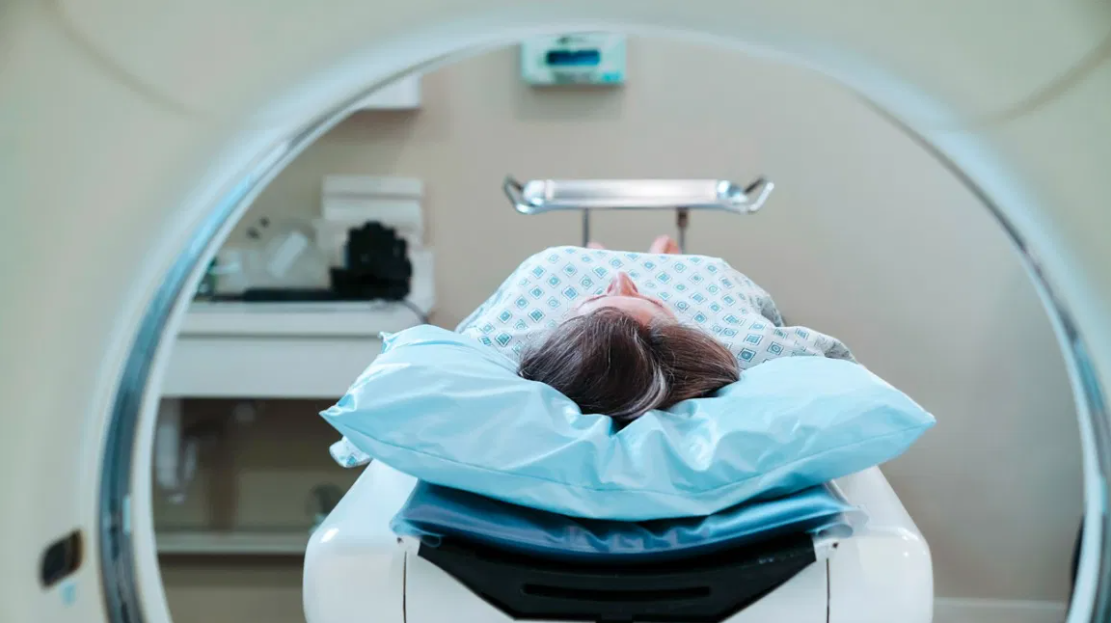Computed tomography (CT or CAT scan) ranks among the top five medical developments of the last 50 years, according to most medical surveys. CT has proven to be such a valuable medical diagnostic tool that the 1979 Nobel Prize in Medicine was awarded to its inventors.
How does it work?
X-ray image of the body.
X-ray image of internal body structures
Both conventional x-rays and CT scans take pictures of structures inside the body. In conventional X-rays, the structures overlap. For example, the ribs overlap the lungs and the heart. On an x-ray, medically important structures are often obscured by other organs or bones, making diagnosis difficult.
CT image of the body
CT image showing internal structures of the body
On a CT image, overlapping structures are removed, making the internal anatomy more apparent.
During CT imaging, an X-ray tube rotates around the patient so that multiple images can be taken from various angles. These images are stored in a computer that analyzes them to create a new image in which overlapping structures have been removed.
CT images allow radiologists and other types of doctors to identify internal structures and see their shape, size, density, and texture get your ct scane done from labuncle. This detailed information can be used to determine if a medical problem exists, to assess the extent and exact location of the problem, and to reveal other important details that can help the doctor determine the best treatment. These images can also determine the absence of an abnormality.
Illustration showing a CT image of the head.
A CT scan that shows no abnormalities still provides useful data. The information helps the medical professional by diverting attention from unnecessary medical issues.
Modern CT scanners acquire this information in seconds, sometimes a fraction of a second, depending on the exam.
Benefits
The benefits of CT enable more effective medical care:
determining when surgeries are necessary
reducing the need for exploratory surgeries
improving diagnosis and treatment of cancer
reducing hospital stay
guiding the treatment of common conditions such as injuries, heart disease and stroke
improving the allocation of patients to the appropriate areas of care, such as intensive care units
In the emergency room, patients can be scanned quickly so that doctors can quickly assess the patient’s condition. Emergency surgery may be needed to stop internal bleeding. CT images show the surgeon exactly where he needs to operate. Without this information, the success of the surgery is highly compromised. The risk of radiation exposure from CT is very small compared to the benefits of well-planned surgery.
Also Read: Human Connectome Project, the search for information and data about the brain
The CT scan provides different medical information than other imaging tests, such as ultrasound, MRI, SPECT, or nuclear medicine. Each of the imaging techniques has advantages and limitations.
The main advantages of CT are its abilities to:
Acquire images quickly.
Provide clear and specific information.
Take images of a small portion of the body or the whole body during the same exam.
No other imaging procedure combines these benefits in a single session.





